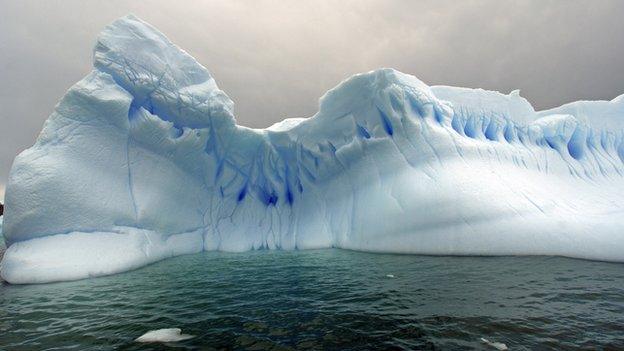Ozone layer showing 'signs of recovery', UN says
- Published
- comments
Roger Harrabin reports on the findings
The ozone layer that shields the earth from cancer-causing ultraviolet rays is showing early signs of thickening after years of depletion, a UN study says.
The ozone hole that appears annually over Antarctica has also stopped growing bigger every year.
The report, external says it will take a decade before the hole starts to shrink.
Scientists say the recovery is entirely due to political determination to phase out the man-made CFC gases destroying ozone.
The study was published by researchers from the World Meteorological Organization (WMO) and the UN Environment Programme (UNEP).
"International action on the ozone layer is a major environmental success story... This should encourage us to display the same level of urgency and unity to tackle the even greater challenge of tackling climate change," said WMO Secretary-General Michel Jarraud.
Dr Ken Jucks from the US space agency Nasa told BBC News that humans "have started to do the right thing in order to convert the atmosphere back towards what it was before the industrial revolution started".
Scientists cannot be absolutely certain yet that the hole will heal itself. Prof David Vaughan from the British Antarctic Survey (BAS) said that test results from his organisation would throw extra light on the WMO's findings.

The largest hole in the ozone layer appears over Antarctica
"We have to be a bit cautious, but this does look on the face of it like some very good news," he told BBC News. "Our own data from the Antarctic will take a few weeks to process but we hope to confirm the findings. If it's accurate, it underlines the potential power of international agreement."
CO2 still problematic
The good news on ozone comes in the wake of bad news on the gases fuelling climate change. The WMO said this week, external that atmospheric greenhouse gases had reached a record high.
Tackling a gas like carbon dioxide (CO2) which is central to so many facets of human life is of a completely different order to reducing a few chemicals for which substitutes can be found.
The 1987 Montreal Protocol that banned or phased out ozone-eating depleting chemicals, including chlorofluorocarbons (CFCs) once widely used in refrigerators and spray cans, would prevent two million cases of skin cancer annually by 2030, according to UNEP.
It would also help prevent damage to wildlife, agriculture, peoples' eyes and immune systems, the agency added.
The WMO say ozone should recover towards its 1980 level by mid-century, or slightly later for Antarctica, where it gets dangerously thin every year between mid-August and November or December.
It says progress could be improved by as much as 11 years if existing stocks of ozone-depleting substances - many of them stored up in old fridges and fire-extinguishers - were destroyed.

The purple areas show how the ozone layer has depleted over time
- Published20 September 2013